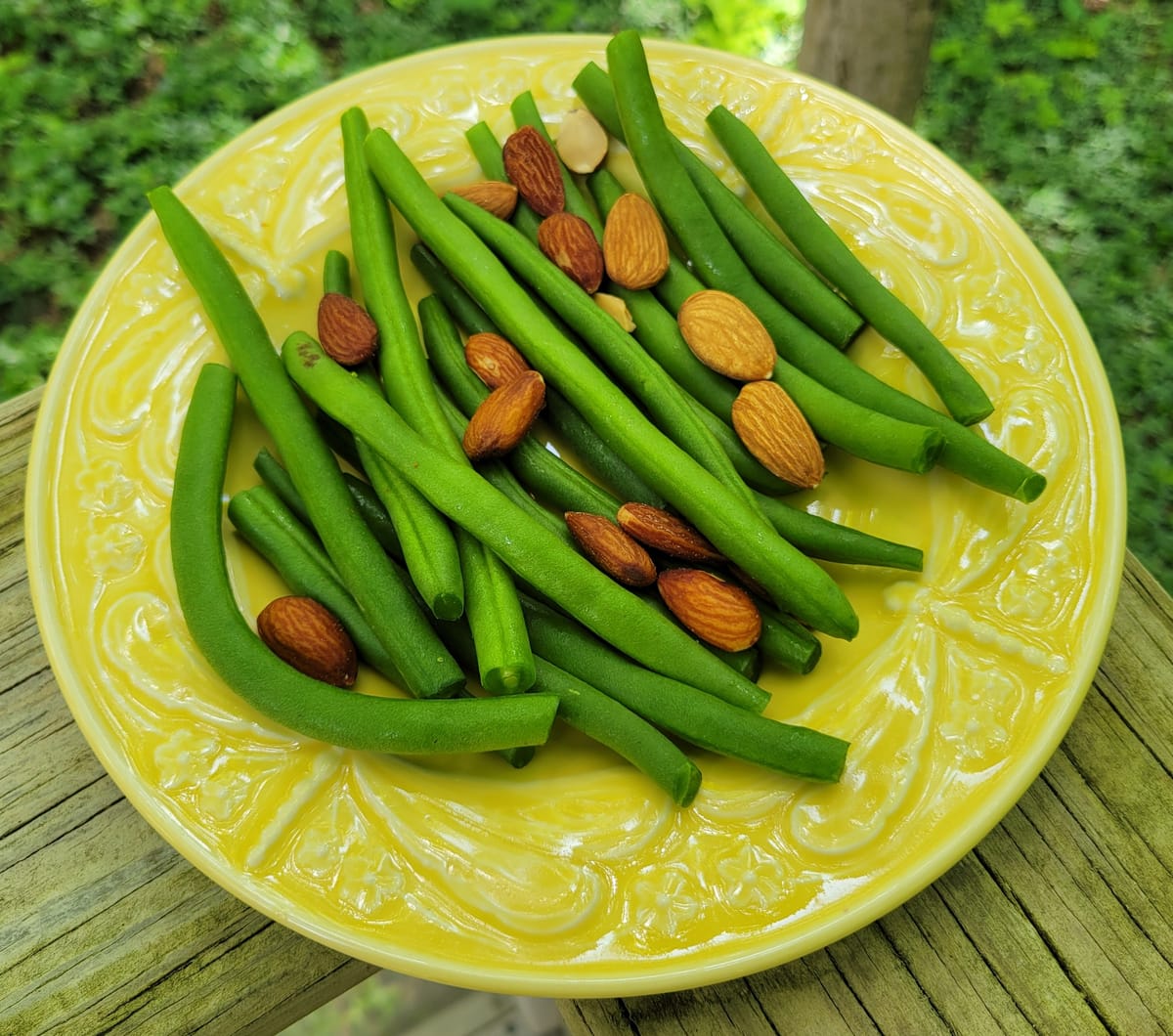On My Plate: Green beans
Green beans used to be widely known as string beans because they had a tough fibrous strip that needed to be removed before cooking and eating.

Local green beans show up as a side dish several times a week for us this time of year. Relegated to a supporting role at meals, it’s easy to overlook how good local green beans taste.
Green beans were once more widely known as string beans because they had a tough fibrous strip running their length that needed to be painstakingly removed before cooking and eating. The Seedsmen Hall of Fame calls Calvin Keeney (1849-1930), a horticulturist in LeRoy, New York, the “father of the stringless bean.” He is credited with breeding the string out of the bean, beginning with Keeney’s Stringless Refugee Wax in 1884 and most famously Burpee’s Stringless Green Pod in 1894.
In recent decades, it has become nearly impossible to find anyone growing beans with strings. My vintage cookbooks suggest that the name of the bean switched from “string” to “green” in the mid-20th century.
Most green beans were once grown on poles, but most are now grown on bushes. Pole beans are more productive, but as the name suggests, they grow tall, so they must be attached to poles or trellises. Both bush and pole beans have been available at Oxford’s farmers market.
To cook green beans to proper doneness, bring a pot of water to a boil. Cook the beans in still-boiling water for 3 minutes. Remove the beans immediately from the pot, quickly bathe them in icy cold water, dry the cold beans on a towel and set aside until ready to use. The icy bath prevents the beans from overcooking and has the added benefit of preserving the attractive bright green color.
To serve the beans hot, prepare a sauce or topping separately. At the last minute, toss the beans to coat in the hot sauce or topping. The beans will then be suitably warm.
On a hot summer day, a cold green bean salad is appealing. To serve cold, I can report from experience that it is very easy to overcook the beans. Get them out of the boiling water and into the icy bath in a hurry, then dry them quickly. Otherwise, they will be unappealingly soft.
Once cold and dry, the beans can be combined with other items. French language recipes vary from simply tossing with slivered almonds and lemon juice to elaborate main dishes with hard-boiled egg, tomato chunks, Parmesan and the list goes on.
The French name —haricot vert — is now used in the United States as a marketing label for a longer, thinner green bean. Americans insist on mispronouncing “vert” to rhyme with “hurt” instead of with “where.”
Many years ago, when I was living in France, my visiting grandmother asked me to order green beans as part of her restaurant meal. I did so with the correct pronunciation, and the waiter promptly brought out a huge plate of them as a separate first course, rather than accompanying the main course. This is less likely to occur today, as haricots verts are one of the few vegetables that bistro chefs are willing to serve on the same dinner plate with meat or chicken.
This is the final week that Sean Scott will be editing this column. Thank you, Sean, for all you have accomplished here as Founding Editor of the Oxford Free Press. Thank you, readers, for your strong support for the newspaper and for Sean. I’ll see you next on this page on July 18.
James Rubenstein is president of the Board of Directors for the Oxford Free Press and professor emeritus of geography at Miami University.




